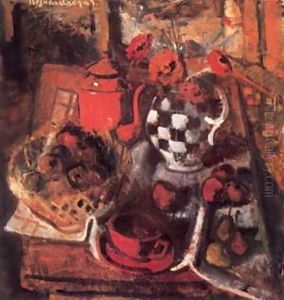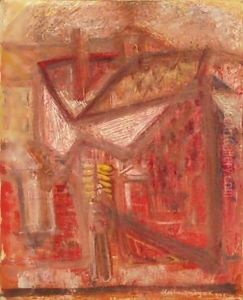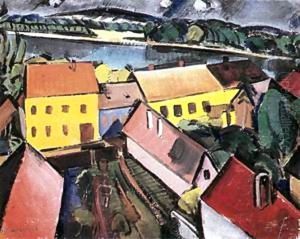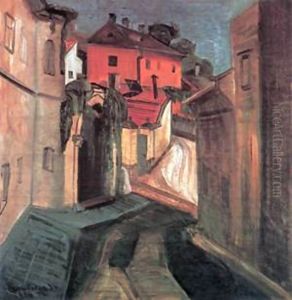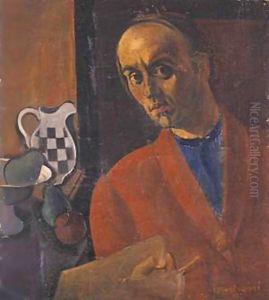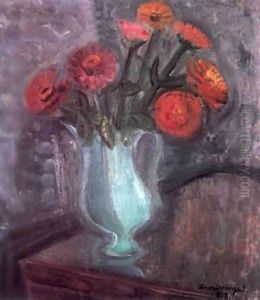Karl Briullov Paintings
Karl Pavlovich Briullov, originally Charlemagne-Louis Bruleau, was a prominent Russian painter of the 19th century, who is often regarded as a key figure in the transition from the neoclassical to the romantic era in Russian art. He was born on December 12, 1799, in St. Petersburg to a French immigrant family that had settled in Russia. His father, Pavel Briullov, was a sculptor and engraver, which provided the young Briullov with an artistic environment from an early age.
Briullov received his initial education at the Imperial Academy of Arts in St. Petersburg, where he demonstrated remarkable talent. After graduating with a gold medal in 1821 for his painting 'The Last Day of Pompeii,' he was granted a scholarship to study in Italy. It was during his time in Italy that Briullov completed his most famous work, 'The Last Day of Pompeii' (1830-1833), which received widespread acclaim and established his reputation. This monumental canvas merged classical composition with romantic emotion and was a significant departure from the strict neoclassical styles prevalent at the time.
Throughout the 1830s, Briullov continued to work in Italy, earning a reputation as one of the finest portraitists of his day. He painted numerous portraits of the Russian aristocracy and European nobility who were living or traveling in Italy. His portraits are characterized by a sense of immediacy and psychological depth, as well as a mastery of light and color that reflects the influence of the old masters he studied during his time abroad.
Briullov returned to Russia in the mid-1830s, where he continued to work and teach at the Imperial Academy of Arts. His return marked the beginning of a new phase in Russian art, as he introduced the romantic sensibilities he had honed in Italy. He influenced a generation of Russian artists, including the famous realist painter Ivan Turgenev.
During the latter part of his life, Briullov's health began to decline, and he returned to Italy in hopes that the climate would be beneficial. He continued to paint and participate in the artistic community there until his death on June 11, 1852, in the village of Manziana near Rome. Briullov left behind a rich legacy that was instrumental in shaping Russian art. He is remembered not only for his grand historical paintings but also for his masterful portraiture and his role in bringing romanticism to Russian art.




